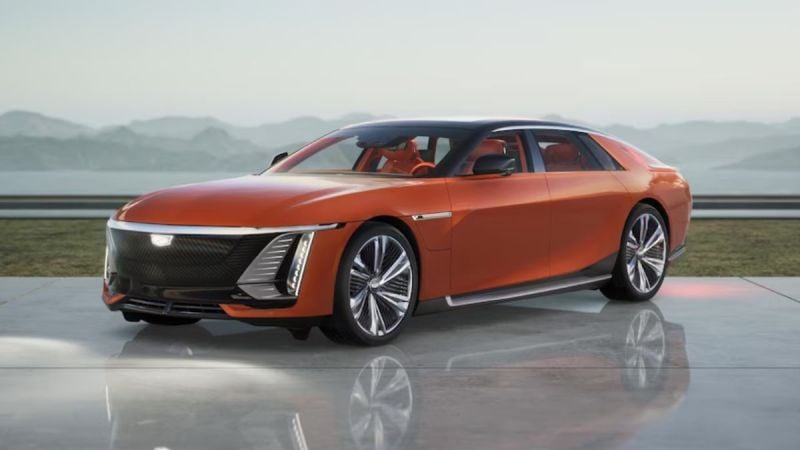Cadillac, a name once synonymous with the pinnacle of American automotive luxury, is boldly charting a course into the electric ultra-luxury stratosphere with its Celestiq. This isn't your great-uncle's cushy Coupe DeVille; this is a meticulously hand-built, technologically audacious flagship, commanding a king's ransom with a price tag that starts around $340,000. The ambition is clear: to wrestle for attention with the hallowed badges of Rolls-Royce and Bentley in the EV domain. However, the initial dashboard readings are looking a bit dim. Early reports indicate that Cadillac has managed to sell fewer than 25 of these bespoke Celestiqs so far, a number that seems more like a rounding error than a sales triumph, especially when initial production plans hinted at a few hundred per year. So, what’s causing this flagship to list?
The Price is (Perhaps Too) Righteous
Let's not tiptoe around the Baccarat crystal elephant in the showroom: that $300,000+ price tag. It’s a breathtaking sum. Cadillac, for all its storied past and recent resurgence, is arguably punching above its weight class here. While the brand has a rich heritage, it has spent recent decades building its reputation back up, largely in price segments well south of this. Convincing the ultra-affluent to pivot from established titans like Rolls-Royce (whose electric Spectre is a direct, and reportedly more readily accepted, competitor) or Bentley requires more than just impressive tech and a dramatic silhouette; it demands an almost unshakeable brand prestige that takes generations to solidify. The jump from a very luxurious, but still relatively mainstream, $100,000 Escalade to a bespoke electric sedan costing three to four times that is a chasm few existing Cadillac customers, and even fewer new ones, seem prepared to cross. It's a segment where brand perception is often paramount.
Large Sedans: The Dinosaurs of the Driveway?
Compounding the challenge is the Celestiq's form factor. It's a grand, imposing sedan. While undeniably elegant, large sedans, even at the luxury end, have seen their popularity wane considerably over the past decade or two, consistently losing market share to their high-riding SUV and crossover brethren. The very demographic that can afford a Celestiq is often the same one flocking to Rolls-Royce Cullinans, Bentley Bentaygas, or even Cadillac's own imposing (and highly profitable) Escalade IQ EV. One has to wonder if a statement SUV at this price point might have found a slightly warmer reception.
The Continental Comparison (And My Grandmother's Glorious Land Yacht)
History offers a somewhat sobering parallel: the Continental Mark II. Launched by Ford's separate Continental division for the 1956 model year, it was a masterpiece of mid-century design and exclusivity. It was also, at around $9,966 (about $117,000 in today's money), the most expensive American-made car of its time. The result? It was a commercial flop. Despite critical acclaim, only about 2,994 were produced over its two-year run because, as it turned out, even with a Ford pedigree, that price was a tough sell against established European luxury. My own grandmother drove one – a stunning, opulent machine that exuded presence but likely cost Ford money on every unit. It’s one of those cars I’ve always dreamed of finding in a dusty barn and giving a modern Restomod treatment, but its fate serves as a reminder: ultra-high price points for American luxury brands can be treacherous waters.
The Halo Effect: A Flashy Pantera Play?
So, if volume sales aren't materializing, what's the Celestiq's purpose? It’s almost certainly intended as a "halo car." The idea is that this stunning, technologically advanced, and astronomically priced vehicle will generate buzz, showcase Cadillac's engineering and design capabilities, and draw curious onlookers into dealerships. Once there, awed by the Celestiq (which they probably can't afford), they might just drive off in a more attainable Lyriq, Optiq, or Escalade IQ. This isn't a new strategy. Back in the early 1970s, Ford did something similar by selling the exotic, Italian-designed, American V8-powered De Tomaso Pantera through its Lincoln-Mercury dealerships. The Pantera was a head-turner, an aspirational vehicle that got people through the doors, even if most ended up buying a Cougar or a Continental. The Celestiq, with its hand-built exclusivity and cutting-edge EV tech, aims to cast a similar spell, elevating the perception of the entire Cadillac brand.
Wrapping Up
The Cadillac Celestiq is an undeniably ambitious and beautifully executed statement piece. It demonstrates the heights of Cadillac's design and engineering vision for an electric future. However, its stratospheric price tag places it in a fiercely competitive arena where brand legacy often trumps sheer innovation. Coupled with the general market headwinds for large luxury sedans, its current low sales volume isn't entirely surprising. Whether it ultimately justifies its development costs through a powerful halo effect, drawing customers to more mainstream Cadillac EVs, or if it remains a stunning but commercially limited footnote like the Continental Mark II, only time will tell. For now, it’s a breathtaking gamble on redefining American ultra-luxury.
Image source: General Motors
Rob Enderle is a technology analyst at Torque News who covers automotive technology and battery developments. You can learn more about Rob on Wikipedia and follow his articles on Forbes, X, and LinkedIn.












Comments
Saving the planet one $300K…
Permalink
Saving the planet one $300K EV at a time?
The Celestiq is an…
Permalink
The Celestiq is an outstanding vehicle and was never intended to be a high volume seller. They will be limited to less than a couple of hundreds per year. This is the rollout edition, so that's why this year GM limited to 25 units.